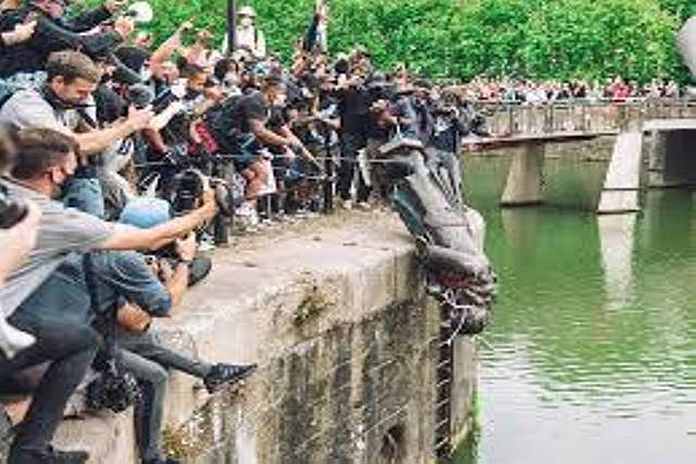[This is an excerpt from an article in The Round Table: The Commonwealth Journal of International Affairs. Opinions expressed in articles do not reflect the editorial position of the Round Table.]
By Edward Chancellor
After a statue of Edward Colston, the seventeenth-century slave-trader and philanthropist, was pulled down by a mob and thrown into Bristol harbour last June, there were calls for a number of other statues around Britain to be removed. This wave of statue-bashing can only be understood in the context of the ‘woke’ political movement for Social Justice, with its cancel culture, online denunciations, censorship, and intolerance. The ‘Great Awokening’ is an assault on the cultural values of the Enlightenment and should be resisted by all civilised people. That involves tolerating the public display of statues of historical personages who, by the lights of the modern world, had feet of clay.
The Social Justice warrior’s approach to history is ill-informed, one-sided and anachronistic. There is a refusal to understand or accept that different periods have different values, and that it is the job of the historian to remain impartial. Instead, history is turned into propaganda to achieve some political end and reduced to a branch of ‘grievance studies’ promoted by loud-mouthed activists and their opportunistic hangers-on in academia. The cultural nihilism, characteristic of this movement, extends far beyond calls to remove statues. For instance, earlier this year students at the Royal Academy of Dramatic Arts, Britain’s leading theatre school, demanded that Restoration drama no longer be staged because of its association with ‘empire.’
Woke history is woefully indiscriminate. Over the course of the summer, statues of Robert Clive, William Ewart Gladstone, Robert Peel, Queen Victoria, Abraham Lincoln, Mahatma Gandhi, and Winston Churchill were all branded ‘racist’. While real history is complex and nuanced, the statue attackers are simplistic and promote a Manichaean view of the world, with everyone judged as either good or evil.
Often the statue attacks are just plain wrong. For instance, a statue of Robert the Bruce, the fourteenth-century Scots king who fought against the English invaders, was daubed with anti-racist graffiti. Another statue of the British prime minister Sir Robert Peel was vandalised after the mob confused Peel with his father, also named Robert, who as an MP had voted against the Abolition of the Slave Trade Act of 1807.
Sometimes the historical context requires closer examination.
This article written by Edward Chancellor, historian and journalist originally appeared on The Round Table on December 1, 2020





